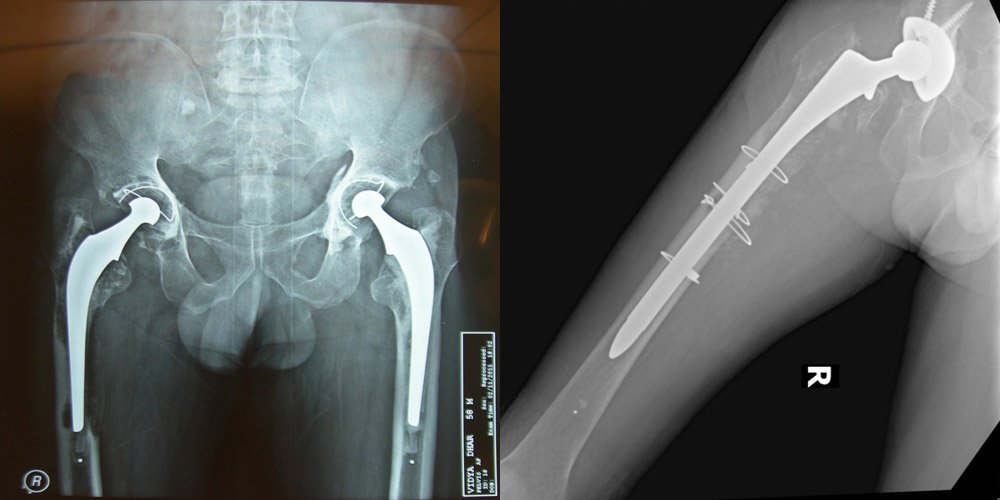Revision total hip replacement (THR), also known as hip revision surgery, is a surgical procedure performed to replace a previously implanted hip prosthesis with a new one. Similar to revision total knee replacement, this procedure is more complex and specialized than the initial hip replacement and is typically required when complications arise or when the original hip implant wears out over time. The goal of revision THR is to correct issues with the existing implant, alleviate pain, improve stability, and restore function to the hip joint.
Common Reasons for Revision Total Hip Replacement:
- Implant Loosening: Over time, the hip prosthesis components may become loose, leading to pain and reduced mobility.
- Infection: Infections can occur in the hip joint, requiring the removal and replacement of the implant.
- Fracture Around the Implant: A fracture near the hip implant can compromise the joint’s stability and necessitate revision surgery.
- Implant Wear and Tear: The materials used in hip prostheses can wear down over the years, causing pain and decreased function.
- Dislocation or Instability: Some patients may experience recurrent dislocations or instability of their hip replacement, which may require surgical correction.
- Bone Loss or Bone Resorption: Over time, bone loss or resorption can occur around the original hip implant, making it necessary to revise the implant and potentially use specialized components to compensate for the bone loss.
- Chronic Pain: Persistent or recurring pain in the hip joint following the initial hip replacement may indicate a problem with the implant.

The Revision THR Procedure:
Revision THR is a complex surgical procedure that involves several steps:
- Exploration and Removal: The surgeon begins by incisioning and removing the existing hip implant components, including the socket (acetabular cup) and the femoral stem.
- Assessment of Bone and Tissue: The surgeon assesses the condition of the bone and surrounding soft tissues. Sometimes, bone grafts or specialized components may be necessary to address bone loss or defects.
- Implant Replacement: New hip implant components are implanted, including a new acetabular cup and femoral stem. These components may differ from the original implant to better suit the patient’s needs.
- Closure: The surgeon closes the incision and moves the patient to a recovery area.
Recovery from revision THR can be challenging and typically involves physical therapy and rehabilitation to regain strength and mobility. The specific recovery process varies depending on the individual’s condition and the extent of the revision surgery.
Patients considering revision THR should consult with an experienced orthopedic surgeon specializing in complex hip revisions to determine the most appropriate treatment plan for their situation.
When addressing complex issues with hip prostheses, you want a surgeon with exceptional expertise and experience. Dr. Mrinal Sharma is a renowned orthopedic surgeon specializing in revision total hip replacement (THR) procedures.
When is Revision Total Hip Replacement Necessary?
Revision THR becomes necessary when a previously implanted hip prosthesis exhibits signs of failure, instability, infection, or wear and tear. Dr. Mrinal Sharma understands the intricacies of revision surgeries and is dedicated to providing the highest level of care to patients facing these complex situations.
Patient Success Stories:
Dr. Mrinal Sharma’s expertise and dedication have led to numerous success stories of patients who have regained mobility and improved their quality of life following revision total hip replacement. These stories underscore his commitment to excellence in orthopedic care.
Conclusion:
Choosing the right surgeon is pivotal if you or a loved one is confronting the possibility of revision total hip replacement. Dr. Mrinal Sharma’s experience, dedication, and patient-centered approach make him a trusted choice for those seeking the highest level of care in hip revision surgeries. Under his expert guidance, patients can anticipate a brighter, more mobile future with enhanced quality of life.

